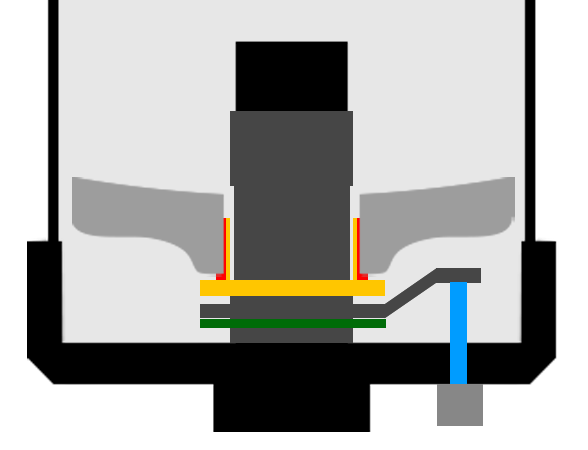Tilt Mechanism
In order to improve the collimation of the C11 both at prime focus and with the hyperstar a few modifications were necessary. The ability to collimate the primary mirror was the answer. This ensures that you can always place the primary focal point on the same optical axis as the corrector and the secondary mirror. Having the ability to tilt the three components on the light path like in a newtonian system ensures you can iterate towards a very accurate collimation with less mechanical constraints such as imperfections in machining of the cell or baffle.
The main challenge was to fit the new tilt system behind the primary mirror while keeping the original focuser design. So how do you hold a heavy piece of glass with three bolts without stressing it and still allow it to travel along the tube for focusing? Time, trial and error.
The main constraints were as follow:
- The primary mirror mounting, originally bonded with RTV and cork on the focusing arm, had to be free so it could be tilted. The original Celestron mounting consisted of a fixed primary shimmed with three paddle pop sticks for centering. The gaps were filled with RTV. Front and back cork ring shims were embedded in the RTV to sandwich the glass mirror in between the retaining ring and the back of the focusing arm.
- The focusing arm had to be machined down also so we could incorporate the tilt mechanism behind the mirror with enough gap to allow for tilt.
- Finally the whole design had to fit within a gap of 30mm because of the retaining ring thread in front of the primary and the fixed length of the focusing arm.
This is an animation for the new design of the focusing arm with the integration of the tilt mechanism. The push/pull screws were left out for clarity as their function is trivial.
- Light grey is the glass mirror.
- Yellow is the stainless steel flange bonded to the mirror.
- Red is the RTV bond between the glass mirror and the stainless steel flange.
- Dark Grey is the original focusing arm with the aluminium ring glued to its back in green.
*note: notice that the focusing tube was also machined down along a part of its length to create a depression and give additional room for the stainless steel flange to tilt.
- Blue is the original focusing arm bolt with the micro focuser at the bottom of the cell.
- Black is the original primary casting and baffle tube.
As you can see the new design impact on the original parts is minimal.

